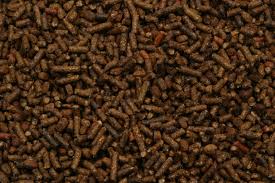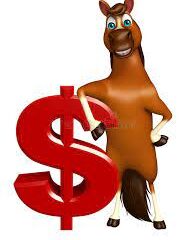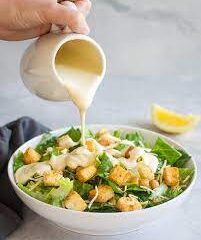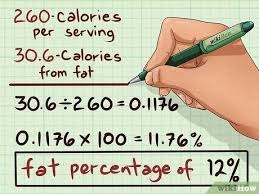Choosing the Right Horse Feed

People often ask me “What is the best horse feed?”. My answer is always, “That depends on the horse.”
The good news is that there are many great feeds to choose from to feed our horses. The bad new is that there are so many choices choosing the right feed can be confusing. Making the wrong feed selection can deliver less than the expected results. Often times a good feed is blamed for poor results when in fact the poor results are a product of the wrong feed for the wrong horse in the wrong quantity. Without some guidance we are left with relying on marketing claims, folklore and anecdotal evidence from barn gossip.
High quality feeds have been researched, designed and tested to meet the needs of the many different horses. Various breeds, ages, workloads, disciplines and environments all play a role in choosing feed. The key to selecting the proper feed is to start with the horse we are planning to feed.
This article will help you to understand the three categories of modern horse feed. https://jimthefeedguy.com/the-three-types-of-commercial-horse-feeds/
Start With the Horse
Age
Age as it relates to feed can be broken down into three major categories; growth, mature and senior.
Growth is typically defined as weanling to three years. Sometimes we will keep a horse on a growth program past age three while making a transition to a mature feed. A number of things may change at age three. Obviously growth rate will slow and areas of development will change. We are probably starting our three year old in serious training.
Growth feeds are often overlooked much to the detriment of the foal. Those first three years are the critical time of foundation building and a quality, well balanced feed is essential to proper development. Growth formulations should be fed to brood mares beginning in the third trimester and continue through weaning.
Mature horses are age four and older. There is no upper limit for mature horses because it is becoming increasingly difficult to identify the age a horse becomes a “senior”.
Senior horses seem to have been arbitrarily named as such when they turn 20 but this may not necessarily be the case. Next to balancers senior feeds are probably the most misused feeds. If we look at defining “senior” as a condition and not an age it becomes more clear.
Senior feeds are appropriate for any horse that may be compromised by neglect, disease or debilitation at any age. If a horse needs a little extra TLC for their gut senior feeds are a great choice.
Weight
A horse’s weight is essential in determining how much feed to provide. A horse should be fed a minimum of 1.5% of its bodyweight per day and this can grow to as much as 2.5% or more depending on workload or weight gain requirements. The ratio of forage to feed is 80% forage and 20% concentrated feed.
When determining feed rates we must look at TARGET weight, in other words the desired weight of the horse. An underweight horse of 900 pounds that we’d like to be 1,000 should be fed the rate of a 1,000 pound horse. If you’d like to help the process along you can add an additional 20% as long as you don’t exceed the maximum meal size for concentrated feed.
Body Condition Score
The BCS provides a gauge of the overall condition of the horse through visual observation and touch. A horse’s fat and muscle condition are rated on a scale of 1 to 9 with 5 being perfect. A 1 is so thin it’s probably not going to survive and a 9 is so obese it probably can’t move. I see mostly 4s, 5s and 6s with the occasional 3 or 7.
There is a top line component to the BCS system rated as A, B, C or D.
The BCS can help us determine the energy sources we choose when selecting a feed. Good rib coverage with poor topline may mean more protein and amino acids. On the other hand having a high degree of muscle development with little rib coverage would indicate more fat calories.
The BCS system is totally subjective, almost like a hunter jumper judge. I have insulin resistant horses so my 5 may be your 4.5. The important thing is to establish a baseline on an individual to judge progress over time.
Overall Health
We aren’t going to achieve any results unless all of the boxes are checked. Teeth, parasites and gut health must be accounted for before we are able to develop a good feed program.
Metabolic conditions must also be considered. Cushing’s, Equine Metabolic Syndrome, PSSM and other conditions will play a significant role in choosing a feed.
Environment
Once we have a starting point for the horse itself we move onto the other factors to consider in our feed choice.
Forage
As mentioned earlier the most significant portion of a horse’s nutrition should come from forage which comes in an almost endless variety of types and quality. Forage is also fed in different quantities either for budget or diet.
Ideally, horses should have access to full time limitless forage but in many situations this is not possible and in some instances not advisable if we are dealing with overweight horses.
When selecting a feed program it’s all about total calories and energy sources. Since forage should represent 80% of the horse’s total diet volume the type, quality and quantity of forage is a big part of choosing a feed.
Forage is frequently overlooked for weight management. Hay and especially pasture are a significant source of available calories for horses. Feed is sometimes adjusted up or down to manage weight but look to forage sources first in both of those cases.
Always keep in mind that all feed is designed to supplement forage with forage as the primary source of calories.
Workload
Forage should be the primary source of calories for a horse. In the case of a healthy horse in little to no work forage should be the only source of calories required. A healthy 1,000 pound horse in little to no work requires around 14,000 calories per day. Grass hay averages around 800 calories per pound so 20 pounds of hay should meet that requirement.
Obviously calorie requirements increase with workload and the challenge becomes determining how much work a horse is in. Like the BCS system judging workload varies with the owners perception. When I was a novice owner I thought our coming four year old AQH filly was about ready to die after half an hour of trotting around the arena. In reality she wasn’t even ready to sweat.
Light work is a couple of thirty minute W/T/C sessions in the ring every week. Heavy work is six days of ninety minute, nostril flaring, hose down, cool down sessions per week.
Workload will determine total energy requirements for the horse.
Performance Goals
Workload will determine the total calorie requirements for a feed but your performance goals will really determine the final feed choice.
There are two primary sources of energy, fat and carbohydrates. The best analogy I’ve ever heard for these two energy sources compares carbs to gasoline for bursts of high energy and compares fat to diesel fuel for low heat but long distance.
Trail riding, casual lessons and entry level showing are examples of disciplines that require low calorie supplementation with a balance between fat and carbs.
Higher level show competition, hunters, jumpers, etc. usually involve larger horses in heavy but well paced training. These horses benefit from calorie dense feeds with a higher percentage of energy from fat as opposed to carbs.
Timed events like racing, barrels and gaming horses benefit from a higher percentage of carbohydrates in the mix.
Putting it All Together
It would be impossible to put together all the different scenarios that would determine examples of the best feeds to choose but I can offer some broad brush strokes to give you some ideas.
Let’s take the two easiest feeds first.
We will feed a ration balancer to a horse that is maintaining weight and meeting performance requirements on forage alone. A ration balancer will meet all of the nutritional requirements that the forage may or may not be missing without contributing extra calories. You can read more about ration balancers here https://jimthefeedguy.com/the-many-aspects-of-ration-balancer/
Complete feed is used for horses that have limited or no access to hay or pasture and will be replacing some or all of the forage requirements for the horse. It could be regional availability problems or a dental issue preventing the use of forage.
Everything else is a sliding scale of energy uses and types built on a base of concentrated feeds. This is where it becomes a challenge to make a choice because there are so many variables to consider. Now, add to the basic variables all the marketing nonsense we are bombarded with that must be sifted through. I swear some of these feeds make claims that would put veterinarians out of business and make every horse an 40 year old Olympian.
One rule I always follow regarding concentrated feeds is that I want to feed the minimum volume to get the job done because it’s never good to overload the equine digestive system with concentrated feeds. If you’re feeding 8 pounds of concentrated feed to a healthy 1,000 pound horse in order to meet your workload it’s time to look at a higher energy feed.
Another rule is that if you are feeding the proper feed in the appropriate amount you should not require any nutritional supplementation. There are a few exceptions to this rule such as added amino acids for a younger horse in very heavy work. Electrolytes are another example.
The primary purpose of this article is to present the basics of what should be used to make your choice for horse feed and give some idea of how a feed professional makes the decision on what’s best for a particular horse.



0 Comments